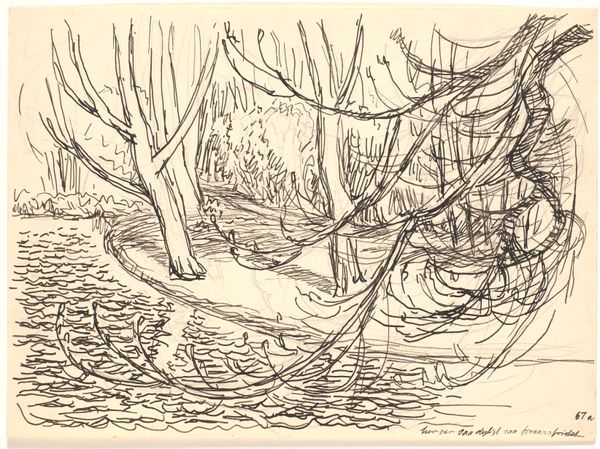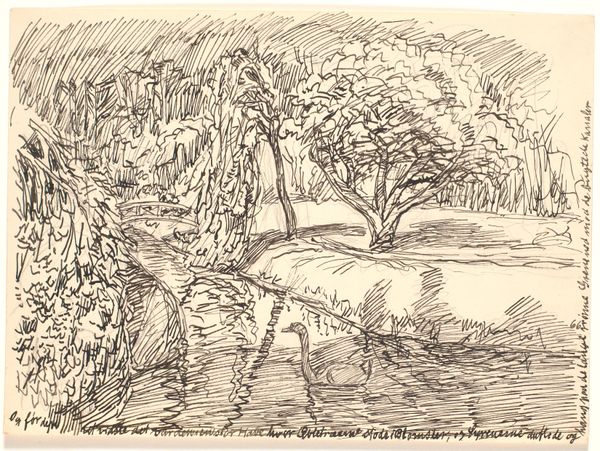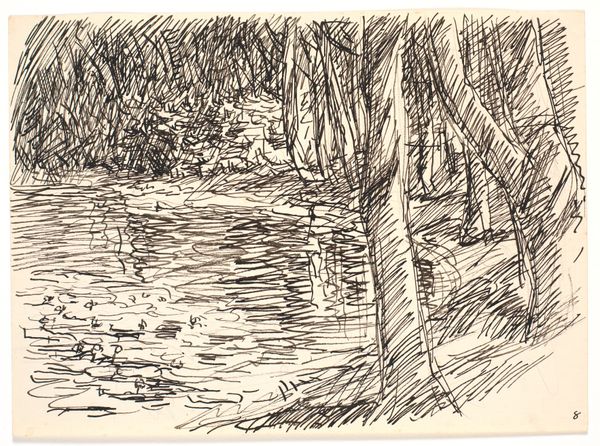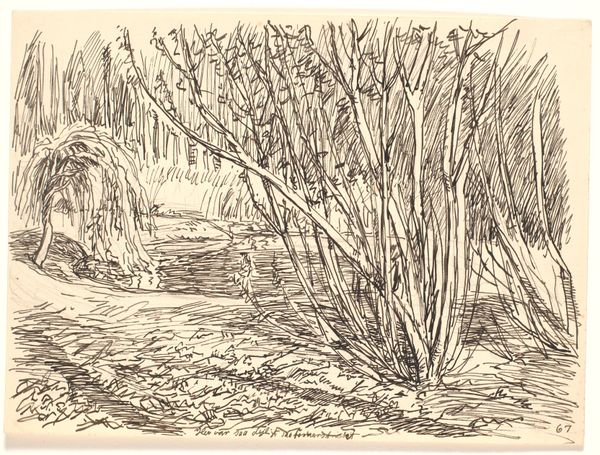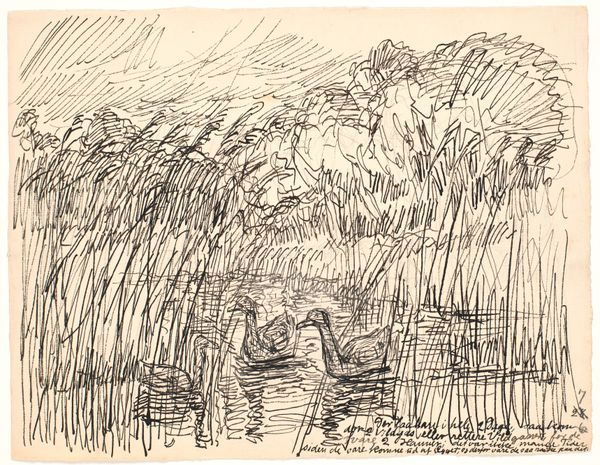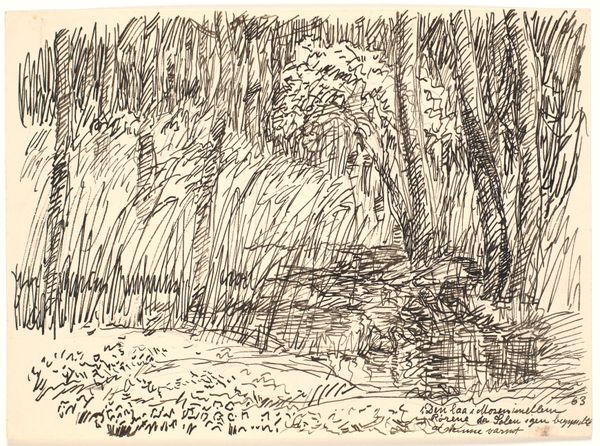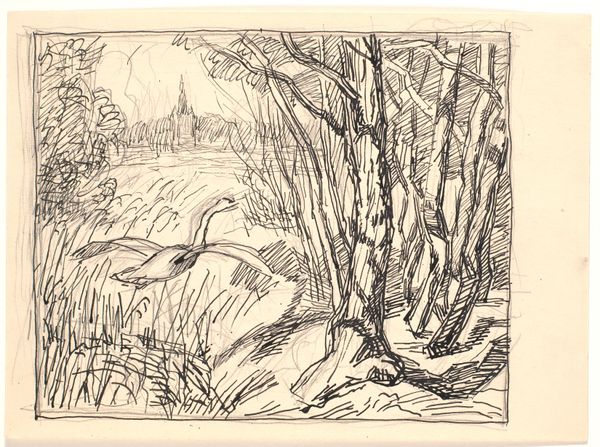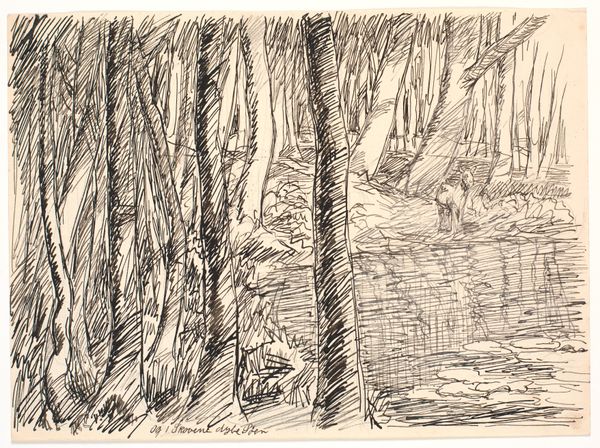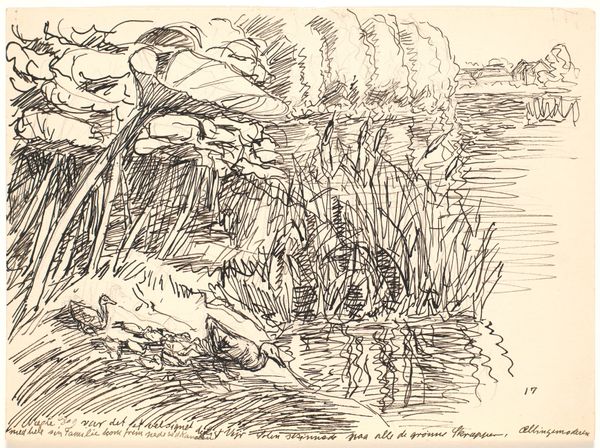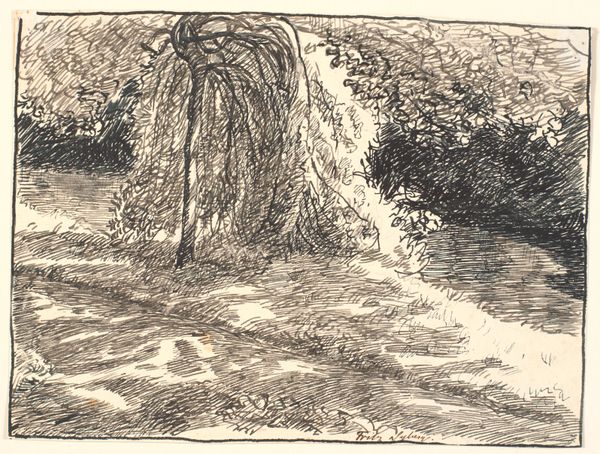
drawing, ink, pen
#
drawing
#
pen drawing
#
neat line work
#
mechanical pen drawing
#
pen illustration
#
pen sketch
#
landscape
#
ink line art
#
linework heavy
#
ink
#
pen-ink sketch
#
thin linework
#
pen work
#
pen
#
realism
Dimensions: 232 mm (height) x 308 mm (width) (bladmaal)
Curator: Let's take a moment to appreciate this pen and ink drawing by Fritz Syberg, "A Lake with Four Swans," created in 1928. It’s part of the collection at the SMK, the National Gallery of Denmark. Editor: My first impression? It feels stark, almost urgent. The rapid, almost frantic linework creates a real sense of movement in the water and the branches. Curator: That energy certainly reflects Syberg’s artistic development within the context of the Funen Painters. Although rooted in realism, he later explored a rawer expression, partly driven by personal tragedies. Think about the rise of Expressionism at the time and the ways it responded to increasing societal anxieties and trauma following the first world war. Editor: The swans themselves feel a bit isolated, don’t they? The way the light hits them, they become almost ghost-like against the darker water. Is that intentional, do you think? Curator: Syberg, while portraying familiar rural settings, was acutely aware of social hierarchies and their impact on individual lives. Consider the swan, an age-old symbol of grace, purity, even royalty. Placed in this somewhat desolate landscape, their symbolic weight takes on a new meaning, perhaps reflecting a critique of societal ideals or a questioning of romantic notions. Editor: It’s interesting to see how Syberg’s choice of medium, the stark black and white ink, contributes to that questioning. Color might have softened the image, made it idyllic, but this feels almost confrontational. What kind of public response did pieces like this tend to elicit? Curator: Initially, Syberg and other Funen artists faced resistance from the established art institutions. However, their depictions of rural life gradually gained acceptance as reflections of authentic Danish identity, particularly during a time of national introspection. Today, Syberg's work encourages a more critical understanding of landscape as a site of constructed cultural meaning. Editor: Well, I for one find that the intensity he captures with so few lines has made me rethink some preconceived notions about traditional landscape art. It is exciting! Curator: Exactly. Syberg challenges us to engage with art not as passive observers but as active participants in uncovering its complex layers.
Comments
No comments
Be the first to comment and join the conversation on the ultimate creative platform.


